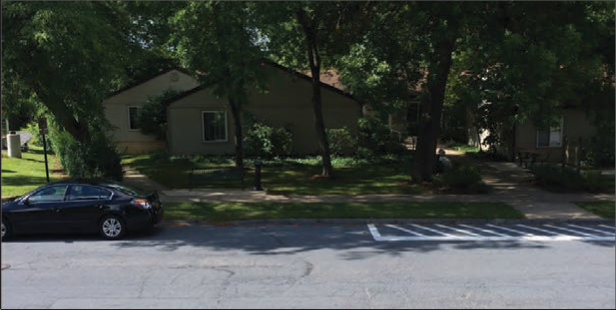
The long wait for low-income housing
By RACHELLE GAYNOR VOICES Staff Writer [email protected]
The economic crisis in the U.S. has hit the residents of Centre County hard. It has caused an increase in the number of people seeking low-income housing, and as a result, extended the waiting period for obtaining a residence. “As of today, we have over
400 families on our waiting list,” said Betty Corman, Section-8 coordinator of the Housing Authority of Centre County. Section 8 is a housing voucher program that is available to assist very low-income families in finding safe and sanitary health options, according to the United States Department of Housing and Urban Development (HUD). The large number of people on the waiting list in Centre County
has resulted in an increased waiting to any assistance being available,” Corman said.
Although it may be close to four years before getting housing assistance, there are still steps that residents should take immediately if they think that they will be requiring low- income housing in the future. The first step is to understand what q u a l i f i c a t ion s need to be met in order to obtain housing in the
Centre County
Photo by RACHELLE GAYNOR // VOICES Staff Writer
Bellaire Court, a low-income housing option for the elderly or disabled in State College, Pa. The most common qualification that low-income housing options consider is a person’s maximum yearly income.
period for any individual or family in a position that requires a lower income option.

Annette Ratliff, program manager of State College’s Housing Transitions, Inc., (HTI) said that the length of the wait varies depending on the location, but there is usually always a wait. “Any Centre County resident that is applying at this time is being told to expect a wait time of three to four years prior
area. According to Corman, the main qualification is income limits that are set by HUD.
These limits are broken down by gross income figures and can be found on the Housing Authority website. For example, the max income per year of an individual to qualify for low- income housing is $24,550 whereas for a family of four the max income is
$35,050. Even though income limit is
the most common qualification that
low-income housing options consider, it is not the only one. “Criminal record and probation status may also impact eligibility,” said Corman. Depending on the location of housing, things like age, disability and number of family members may be considered when people apply for housing.
There are several specialized housing options for the elderly or disabled in the Centre County area including two in State College, Arnold Addison Court on E. Beaver Avenue and Bellaire Court on Bellaire Avenue.
After a family determines if they meet the qualifications, the next step is to figure out how much out-of- pocket cost they will be faced with at different locations. Sometimes it is unclear how much it will cost to live in these low-income housing options. The reason for this lack of clarity is that it changes for each family, and it is hard to determine an exact amount a family or individual should expect to be paying until their adjusted gross income is determined, according to the Housing Authority. “Per HUD guidelines a family should pay no more than 30 percent of their adjusted gross income toward rent and utilities,” Corman said.
All of these steps are complicated and can become overwhelming very easily. That is why there are agencies like HTI that can provide help and useful resources when families are searching for housing options. HTI is a non-profit organization that handles both emergency shelters for people who are homeless, and housing case management for others who are close
to being homeless. Although they are
not an agency that directly places people in housing, their information and resources provide a great first step in the process.
“When people call our agency for help in finding housing that they can afford, we have a big packet of information of various different low- income housing options, their phone numbers and what the qualifications are,” Ratliff said. “It also includes all the landlords in the area that we’re aware of that offer lower income options.”
According to Ratliff, the hardest part of the housing process is keeping up with what is available and what you need to do to get those availabilities. “We keep abreast of all that information all of the time, so the very first thing we do is get that to them,” said Ratliff.
What it all comes down to is putting in the time and effort to contact as many housing options as possible. This is something that can become quite difficult for many people who need low- income housing, especially the elderly, disabled or anyone that is working full-time to support themselves. “It’s always a matter of starting to make calls, and you seriously have to call one right after the other because there is so little housing available here,” Ratliff said.
If you require low-income or emergency housing, or more information, representatives of Housing Transitions, Inc., are available around the clock at 814-237-5508 or at their office during normal business hours at 814-237-4863. ■

Comments
Cost a lot!
I am working as a web designer in Minnesota...I have a plan to buy a small house in Northfield for a long time. However, Up to now, I still can not get it done...the problem is that most of houses there cost a lot.